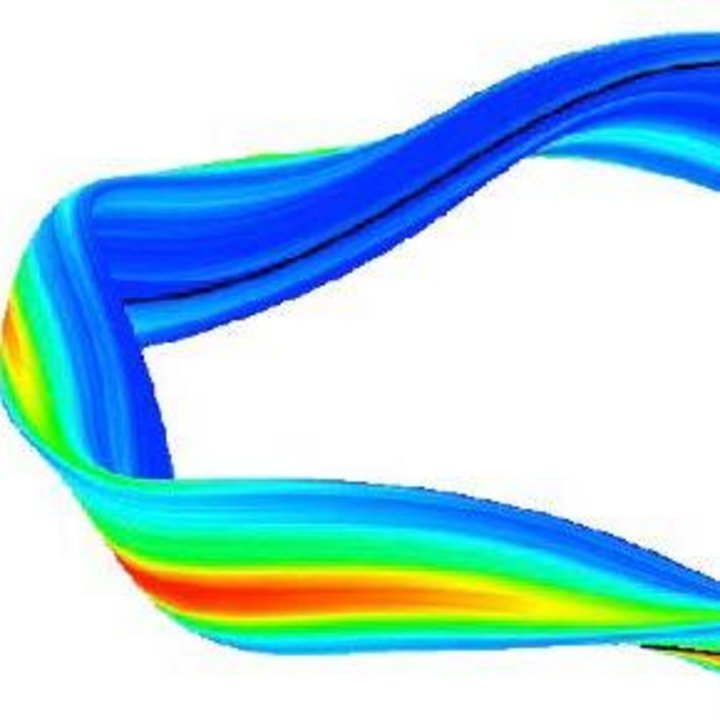Thanks to the multitude of shapes available, we can optimise stellarators even for turbulence.
Plasma turbulence is one of the last fundamental obstacles to harnessing nuclear fusion for power generation. The stellarator concept, which is presently seeing the successful operation of the Wendelstein 7-X experiment, can potentially be optimized to make turbulence negligible. However, in W7-X the magnetic field geometry is optimized for good confinement only. Due to the computational expense of direct numerical turbulence simulation in 3D stellarator geometry, and the lack of accurate reduced predictive models, turbulence could not be incorporated in the optimisation of the design. But it must, if the stellarator concept is to be a power plant candidate.
Read moreContact
News
Alternative road to nuclear fusion
December 11, 2019
The description 'recreating the Sun on earth' is sometimes applied to the nuclear fusion reactor, but a consensus among scientists about just how this 'Sun' can best be tamed has not yet been reached. Plasma expert Josefine Proll is a fan of the stellarator reactor, an alternative for the more mainstream tokamak recently revived. With a new NWO grant, she hopes to give this technology a decisive advantage. Read more
Article 'Fusing different areas of plasma research' in Nature Research
NWO grant for new nuclear fusion reactor
July 16, 2019
Researcher Josefine Proll will investigate new ways to minimise turbulence in fusion reactors. Read more
Meet some of our Researchers
Recent Publications
Our most recent peer reviewed publications
-
A.G. Goodman,K. Camacho Mata,S.A. Henneberg,R. Jorge,M. Landreman,G.G. Plunk,H.M. Smith,R.J.J. Mackenbach,C.D. Beidler,P. Helander
Constructing precisely quasi-isodynamic magnetic fields
Journal of Plasma Physics (2023) -
R.J.J. Mackenbach,J.M. Duff,M.J. Gerard,J.H.E. Proll,P. Helander,C.C. Hegna
Bounce-averaged drifts
Physics of Plasmas (2023) -
P. Costello,J.H.E. Proll,G.G. Plunk,M.J. Pueschel,J.A. Alcusón
The universal instability in optimised stellarators
Journal of Plasma Physics (2023) -
Mark J.H. Cornelissen,Samuel A. Lazerson,Yu Gao,Josefine H.E. Proll,Paul McNeely,Norbert Rust,Dirk Hartmann,Marcin W. Jakubowski,Adnan Ali,Fabio Pisano
Identification of fast ion wall loads in Wendelstein 7-X from thermographic measurements
Plasma Physics and Controlled Fusion (2022) -
R.J.J. Mackenbach,Josefine H.E. Proll,P. Helander
Available Energy of Trapped Electrons and Its Relation to Turbulent Transport
Physical Review Letters (2022)
